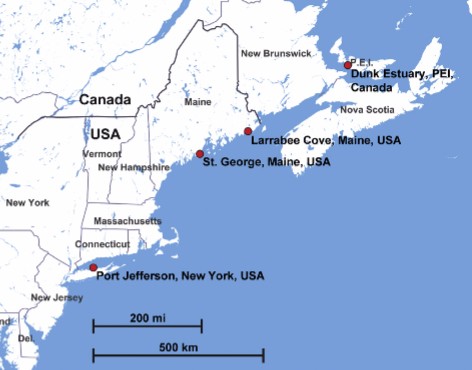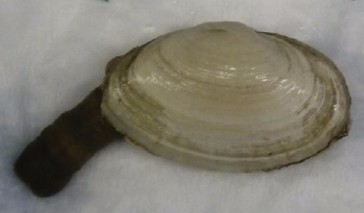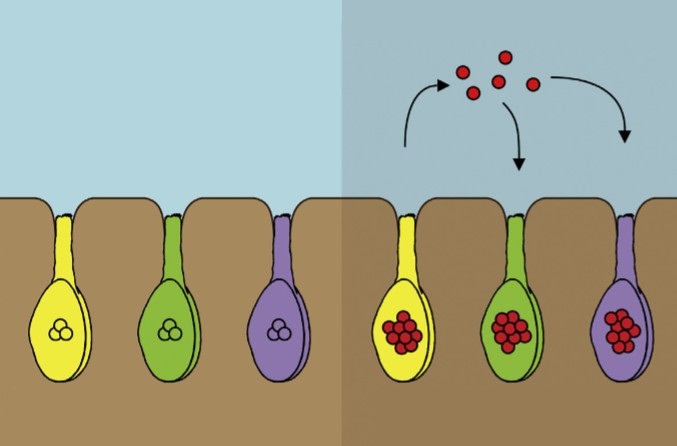In a finding that scientists are calling “beyond surprising,” the decades-long series of outbreaks of leukemia among clams on the eastern North American coast has been attributed the spreading of cancer from one clam to another. The finding has prompted scientists to reassess the assumption that contagious cancers are rare occurrences in nature.
“I think the story is a great example of remarkable biology lying hidden right under our noses — we just have to go looking,” Dr. Stephen Goff of the Howard Hughes Medical Institute and Columbia University told The Speaker. “It reminds us that there are many surprising aspects of nature yet to be discovered. And today we have very powerful new tools that allow us to make these discoveries.”
The team based their conclusion — that a single incidence of cancer was the root of the decades of leukemia outbreaks that have occurred off of the American and Canadian eastern coasts — on findings that the genotypes of the tumor cells come from a single line of tumor cells, not from the host animals own cells. This “rogue clonal cell line,” as the researchers put it, grew, divided, and broke free from the ground zero Steamer clam to infect others.

“That was the biggest surprise, for sure,” Dr. Goff told us. “An earlier, less exciting, surprise was the finding of the huge increase in the copy number of the Steamer retroelement in the tumors,” he added. “It’s the biggest increase in copy number of a mobile element in nature that I know of.”
The team is continuing their research, pushing to understand more about how the cancer became contagious. It is not yet known where the disease began not how the disease transmits between clams.

“We are actively seeking answers to the following questions: What are the mutation(s) that allow the tumor line to do this? Did the Steamer element cause these mutations? When did the original tumor arise? How long has it been spreading? Is this line restricted to the species of origin (the soft-shelled clam) or can it spread to other species? Do other species have similar tumor lines of their own?”
The transmissible cancer studied by the team is not the only known wild case, but the existence of transmissible cancer in nature has previously been considered a rare occurrence.
“We would normally expect this to be rare,” Goff told us. “We know of only two other examples in all of nature: the facial tumors of the Tasmanian Devil, and a canine venereal tumor — both are discussed in the paper, and you can read their histories. We think examples like this are rare — in vertebrates — because the adaptive immune system would recognize an invading tumor cell as foreign and reject it. The Devils do not reject these tumors for a special reason: the animals are almost all genetically identical, having gone through a small bottleneck — they almost went extinct. The dog tumor is special in lacking the surface markers that would mediate the rejection.
“But we suspect these transmissible cancers could well be more common (than we would ever have imagined) in invertebrates. They have only a primitive innate immune system, and the tumor cells must be able to evade this system and invade the new host.

“For this to happen, the tumor has to have evolved to be able to exit from one diseased animal, find its way into a healthy animal — in this case, in the sea — and colonize the new animal. It’s an extreme version of metastasis, where a tumor sheds cells that seed new locations within an individual. Here the tumor is moving into an entirely new animal — not just within an animal.
“The recent research expands our conception of transmissible cancers — they exist not only on land but in a marine environment as well — and this has prompted the researchers to suspect that contagious cancers are more common in nature than we had thought.”
The report, “Horizontal Transmission of Clonal Cancer Cells Causes Leukemia in Soft-Shell Clams,” was completed by Michael J. Metzger, Carol Reinisch, James Sherry and Stephen P. Goff, and was published in the journal Cell.
By Sid Douglas
Images by the research team. Clam photo by Michael J. Metzger
